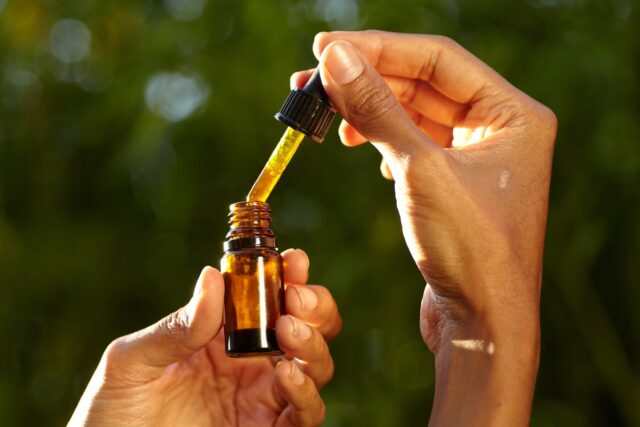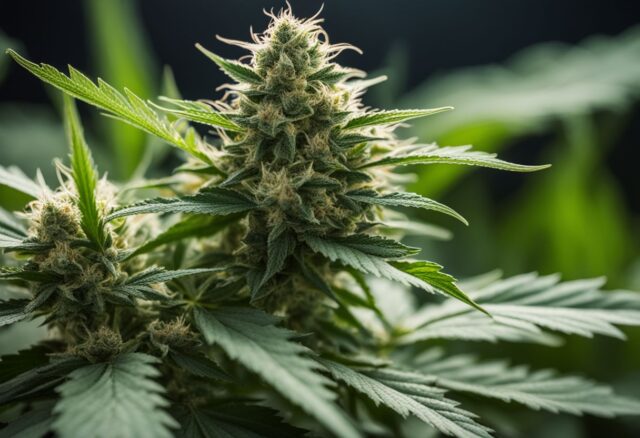
Let’s talk about CBG, a cannabinoid that is becoming a more available natural solution to pain and inflammation. I hope you too try CBG and it renews your zest as a wellness enthusiast when it comes to natural pain relief.
In this blog, I will talk about the beneficial properties of CBG, how it works, and what you need to know before starting to use it for your wellness routine.
Understanding CBG
This is a non-intoxicating chemical cousin to cannabis standard-bearers CBD and THC. CBG doesn’t cause you to get high, and may be a preferable option over other cannabinoids, given its potential medicinal properties.
Cannbigerol, or CBG, is a non-psychoactive compound derived from cannabis plants. Unlike its more famous relative, tetrahydrocannabinol — or THC — high-quality CBG products found on simpleleaf.com do not have the same mind-altering effects that make marijuana so popular as a recreational drug. Because of this, numerous companies have been producing and marketing CBD gummies for medical and therapeutic uses for both humans and animals.
CBG for Pain Management

There have been many studies that focus on CBG. Most of these studies focus on pain and indicate that CBG could be an adequate treatment for:
- Neuropathic Pain
- Inflammatory Pain
- Muscle Pain and Soreness
CBG for Inflammation
The body’s inflammatory reaction is its initial response to injuries and infections. If left unattended, the inflammation becomes chronic and causes serious health problems.
CBG works to modulate the immune system and curtail the release of pro-inflammatory cytokines, thereby conferring it with strong anti-inflammatory properties and making it a potential candidate for addressing inflammatory diseases.
Conditions That May Benefit from CBG:
- Arthritis
- IBD and IBS
Delivery Methods and Dosage

CBG comes in oils, capsules, gummies and topicals. The best way to take it will depend on your preferred dosage and method of getting cannabinoids into your body.
- Sublingual Oils
- Capsules and Gummies
- Topical
Tailoring appropriate doses of CBG to meet one’s therapeutic needs is oftentimes a matter of trial and error, one’s endocannabinoid tone and tolerance, as well as past cannabis consumption experiences and the relationship one has with objective measurables.
Low-dose and titration (gradual, small-incremental increments) are generally recommended to establish a beginning dosage that provides the proper efficacy to treat the desired effect while minimizing side-effects.
Safety and Side Effects
It has a good safety profile, although common side effects include dry mouth, drowsiness and appetite changes. People with underlying health issues or taking medication should consult a healthcare professional before trying CBG.
CBG vs. CBD for Pain and Inflammation

Even though both CBG and CBD are non-psychoactive and promising pharmaceutical cannabinoids, they appear to interact with the ECS and produce noticeably different effects in the body.
Some data indicates that CBG might have better therapeutic use for specific pain and inflammation disorders than CBD, and they may augment each other’s effects through the entourage effect.
The Future of CBG in Pain and Inflammation Management
As CBG research continues to ramp up, analysis is beginning to show its true potential in general health and wellness, pain management, relief of inflammation and more, with an explosion of studies and human trials forthcoming in the near future.
Could its inclusion support the natural wellness and pain-relief regimens of millions of people? Could the inclusion of CBG in the cannabis pantheon be a safer, scientific alternative to our highly toxic opioid and other prescription medications? Well, we can hope.
Neuroprotective Properties
This is a neuroprotective agent. That is, it can assist nerve cells in preventing damage — which can have multiple applications, from neuropathy, a painful condition resulting from nerve damage, to toxicities in the peripheral or central nervous system that might otherwise result in dysfunction or damage to the brain.
By suppressing both oxidative stress and inflammation in the nervous system, CBG may reduce neuropathic pain and help restore normal function to the nerve cells.
CBG in Inflammatory Conditions

Inflammation is the appropriate immune system response to injury or infection, but when it becomes sustained over a long period of time, the issue morphs into chronic inflammation and can contribute to a startling array of chronic health conditions.
It has been shown to modulate the immune system and reduce pro-inflammatory signaling, making it an intriguing candidate for helping to manage the most severe of these chronic inflammation-based conditions.
Athletic Recovery and CBG
It can help with post-workout recovery for everyday sports enthusiasts and frequent exercisers. CBG has potent anti-inflammatory properties, capable of alleviating pain after an intense workout.
Athletes and everyday gym enthusiasts alike can then restore their body’s balance and functions after a workout. CBG can also help with reducing the onset of muscle soreness or the DOMS (delayed onset muscle soreness) syndrome, which is an inflammatory reaction that usually lasts for about three days.
It presents with redness, swelling, and pain in the affected area. CBG potentially keeps inflammation and oxidative stress under control and allows for a healthy recovery process.
Bone Health

New research indicates that CBG may facilitate bone growth and repair, which could be beneficial for athletes and others susceptible to bone injuries or conditions such as osteoporosis.
CBG for Mental Well-being
With chronic pain, so often it has a mental, emotional piece. And so, if you have somebody who is anxious and having trouble coping with the pain, they have inside of them, and they are taking something that improves their cellular structure, while at the same time taking something that is lessening their anxiety and stress, and moving them along to a point of true mental and emotional wellness, now they’re getting the benefit of a much more improved quality of life.
Considerations for Using CBG
When incorporating CBG into your wellness routine, several factors should be considered:
- Quality and Purity
- Consumption Method
- Dosage:
- Consultation with Healthcare Providers
Legal and Regulatory Aspects

Although CBG from hemp (less than 0.3 percent THC) is legal on a federal level in the United States, CBG and CBG products are not necessarily legal in your locality.
Be sure to educate yourself on the regulations in your area surrounding CBG products.
Final Thoughts
CBG’s natural cannabinoid alternative could not be more appealing to consider as an option to address your pain and inflammation.
Unlike opioids, it appears safe and well-tolerated, and its unique binding profile in the ECS, along with the promising preclinical studies showing its effectiveness – and its ability to enhance the binding of many other cannabinoids in the ECS as well – appears to make an excellent candidate for a whole new approach in natural wellness for pain and inflammation patients.









